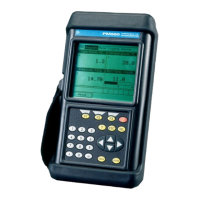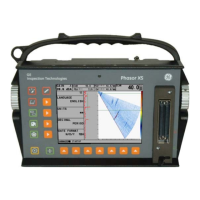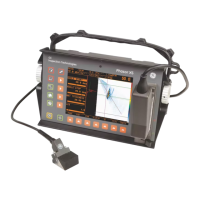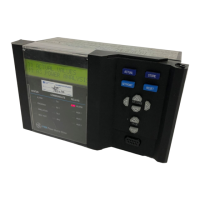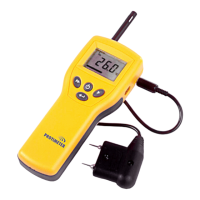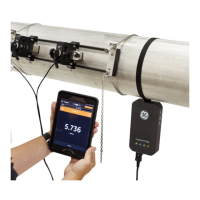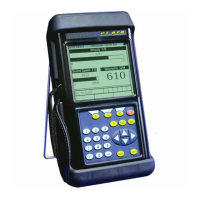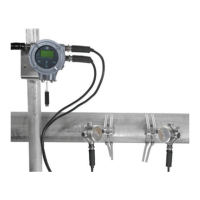GE Power Management PQM Power Quality Meter 4-39
4 PROGRAMMING 4.5 S4 ALARMS/CONTROL
4
VOLTAGE LEVEL
setting. For example, if the
UNDERVOLTAGE LEVEL
is set to
4000 V
, the condition clears when
the voltage in the appropriate phase(s) increases above 4120 V (4000
×
1.03). This hysteresis is imple-
mented to avoid nuisance alarms due to voltage fluctuations.
•
UNDERVOLTAGE DELAY:
If the voltage drops to or below the
UNDERVOLTAGE LEVEL
setpoint value and
remains this way for the time delay programmed in this setpoint, an undervoltage condition will occur.
•
PHASES REQ’D FOR U/V OPERATION:
Select the minimum number of phases on which the undervolt-
age condition must be detected before the selected output relay will operate. This setpoint is not visible if
VT WIRING
is set to
SINGLE PHASE DIRECT
.
•
DETECT UNDERVOLTAGE BELOW 20V:
If an indication is required for loss of voltage, select
YES
for this
setpoint. If
NO
is selected and any one of the voltage inputs has less than 20 V applied, the undervoltage
feature will be disabled.
•
OVERVOLTAGE RELAY:
Overvoltage can either be disabled, used as an alarm or as a process control.
Set this setpoint to off if the feature is not required. Selecting alarm relay will cause the alarm relay to acti-
vate and display an alarm message whenever an overvoltage condition exists. Selecting auxiliary relay will
cause the auxiliary relay to activate for an overvoltage condition but no message will be displayed. This is
intended for process control.
•
OVERVOLTAGE LEVEL:
When the voltage on one, two, or three phases equals or exceeds the level
determined with this setpoint, an overvoltage condition occurs. The number of phases required is deter-
mined by the
PHASES REQUIRED FOR O/V OPERATION
setpoint. To clear the overvoltage condition, the level
must decrease to 97% of the
OVERVOLTAGE LEVEL
setting. For example, if the
OVERVOLTAGE LEVEL
is set to
4200 V, the condition clears when the voltage in the appropriate phase(s) goes below 4074 V (4200
×
0.97). This hysteresis is implemented to avoid nuisance alarms due to voltage fluctuations.
•
OVERVOLTAGE DELAY:
If the voltage equals or exceeds the
OVERVOLTAGE LEVEL
setpoint value and
remains this way for the time delay programmed in this setpoint, an overvoltage condition will occur.
•
PHASES REQ’D FOR O/V OPERATION:
Select the minimum number of phases on which the overvoltage
condition must be detected before the selected output relay will operate. This setpoint is not visible if
VT
WIRING
is set to
SINGLE PHASE DIRECT
.
•
CURRENT UNBALANCE RELAY:
Current unbalance is calculated as the maximum deviation from the
average divided by the average three phase current. Current unbalance can either be disabled, used as an
alarm or as a process control. Set this setpoint to off if the feature is not required. Selecting alarm relay will
cause the alarm relay to activate and display an alarm message whenever a current unbalance condition
exists. Selecting auxiliary relay will cause the auxiliary relay to activate for a current unbalance condition
but no message will be displayed. This is intended for process control.
•
CURRENT UNBALANCE LEVEL:
When the current unbalance equals or exceeds this level, a current
unbalance condition will occur. See chapter 5 for details on the method of calculation.
•
CURRENT UNBALANCE DELAY:
If the current unbalance equals or exceeds the
CURRENT UNBALANCE
LEVEL
value for the time delay programmed in this setpoint, a current unbalance condition occurs.
•
VOLTAGE UNBALANCE RELAY:
Voltage unbalance is calculated as the maximum deviation from the
average divided by the average three phase voltage. Voltage unbalance can either be disabled, used as
an alarm or as a process control. Set this setpoint to off if the feature is not required. Selecting alarm relay
will cause the alarm relay to activate and display an alarm message whenever a voltage unbalance condi-
tion exists. Selecting auxiliary relay will cause the auxiliary relay to activate for a voltage unbalance condi-
tion but no message will be displayed. This is intended for process control.
•
VOLTAGE UNBALANCE LEVEL:
When the voltage unbalance equals or exceeds this level, a voltage
unbalance condition occurs. See chapter 5 for details on the method of calculation.
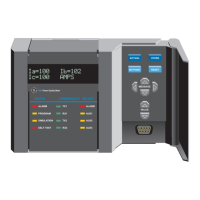
